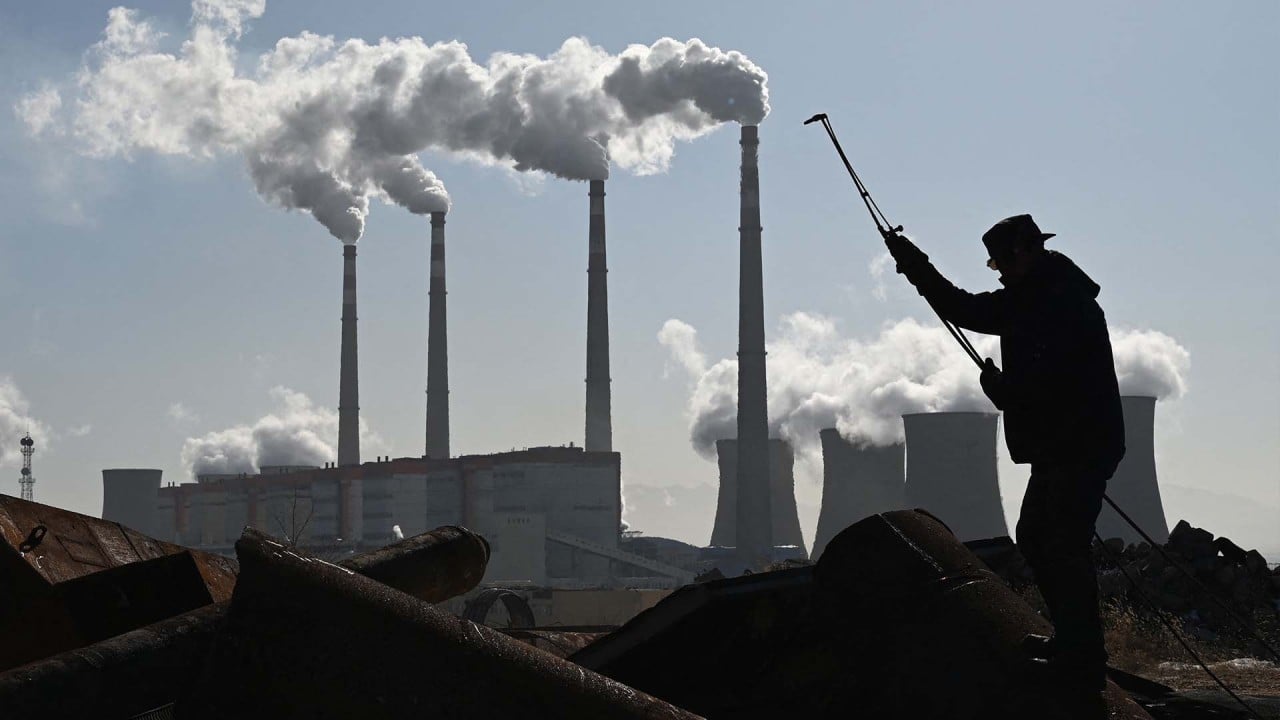
Is China’s coal addiction getting in the way of its climate change goals?
- Chinese policymakers face difficult decisions as recent events have shown the country will still depend on coal despite its lofty climate pledges
- There is still much to be done, but the substantial progress in the shift to renewable energy offers hope
Therein lies the dilemma. Can China still grow at a reasonable rate while relying less on coal to power its factories and businesses?
China accounts for around 30 per cent of the world’s carbon emissions. Not only is China the largest emitter by far, which is not surprising since it has the world’s largest population, last year it also had one of the highest figures of major economies for carbon intensity per unit of GDP, at 0.42, almost double the level of India and the United States.
China’s carbon intensive economy reflects its role as the factory of the world. Domestic manufacturing and industrial production have propelled the world’s second-largest economy forward during the pandemic.
That said, China’s carbon intensity is steadily declining. This could reflect its long-term goal to shift away from heavy manufacturing towards services and household consumption, which should reduce the intensity level in the future.
The dual control policy, coupled with the corresponding decrease in coal mining investments over the years, created a perfect storm for coal shortages in the autumn.
Chinese utility companies wound down their coal inventories in the hope that soaring commodity prices would only be temporary, only to be squeezed when prices continued to remain high, contributing to the worst power shortages in China for more than a decade.
The crisis forced Beijing to quickly revise coal usage guidelines and encourage greater supply production. Meanwhile, the National Development and Reform Commission instituted measures to start liberalising electricity prices.
Still, China has made substantial progress in the shift towards renewable sources of energy. There are positive signs renewables are contributing more meaningfully to the country’s overall energy market.
There is little doubt that China is one of the global leaders in renewable energy supply. Half of the world’s new renewable power supply in 2020 came from China, with the country adding 72 gigawatts of wind power and 49 gigawatts of solar. China doubled its construction of new wind and solar power plants in 2020 from a year earlier.
The share of renewables in China’s total energy consumption rose from around 7 per cent in 2010 to about 15 per cent in 2019. Additionally, market-based approaches to the issue are being implemented. The People’s Bank of China recently unveiled low-interest loans to help support firms working on China’s energy transition.

It is feasible to think that the transition away from coal could materialise in time for China’s 2060 carbon neutrality commitment, as long there are continuing energy conservation efforts and developments in renewable energy technologies such as carbon capture and storage.
China’s goal to rely less on coal to reach its carbon emissions targets is ambitious. How quickly the country reaches this goal is still up in the air, though the road to achieving these targets through promoting alternative energies already appears to have been paved.
David Chao is Invesco’s global market strategist for Asia-Pacific.
David Dodwell is away



